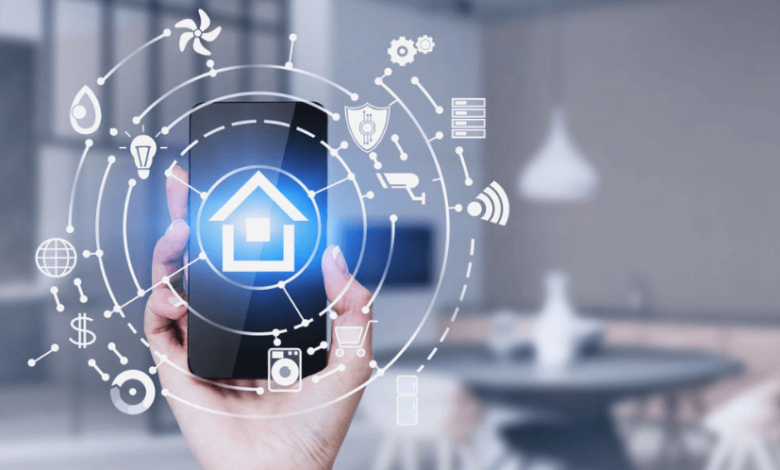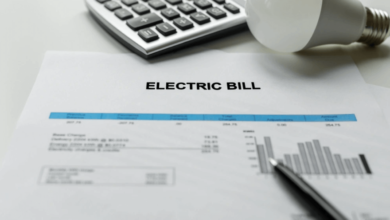Smart Home Automation: Making Life Easier and Safer

Home automation has evolved into an essential part of modern living, combining convenience and security. With smartphone apps and voice commands, these systems adapt to your routines, enhance safety, and provide peace of mind. From adjusting lighting to monitoring your home remotely, automation technology simplifies daily life while prioritizing privacy and protection.
Home Automation for Convenience
Smart Lighting Systems
Intelligent lighting transforms how you interact with your living space. Modern smart bulbs and switches automatically adjust brightness based on time of day, weather conditions, and your personal schedule. You can program lights to gradually brighten in the morning, creating a natural wake-up experience, or dim automatically as bedtime approaches.
Motion sensors eliminate the need to fumble for switches in dark hallways or stairwells. Vacation modes simulate occupancy by randomly turning lights on and off, creating the impression someone’s home even when you’re away.
Automated Climate Control
Smart thermostats learn your temperature preferences and daily routines, automatically adjusting heating and cooling to maximize comfort while minimizing energy costs. These systems can detect when you’re away from home and adjust accordingly, then pre-cool or pre-heat your space before your return.
Advanced models integrate with weather forecasts, adjusting indoor temperatures based on expected outdoor conditions. Some systems even monitor air quality and adjust ventilation automatically.
Voice Assistants and Smart Hubs
Voice-controlled assistants serve as central command centers for automated homes. Simple voice commands control lighting, temperature, music, and security systems without requiring you to locate specific apps or devices.
Smart hubs coordinate multiple devices, creating seamless automation scenarios. For example, a “goodnight” command might lock doors, turn off lights, lower the thermostat, and arm security systems simultaneously.
Kitchen and Appliance Automation
Smart appliances streamline cooking and household maintenance. Refrigerators track expiration dates and create shopping lists, while smart ovens can be preheated remotely and programmed with precise cooking instructions. Coffee makers start brewing based on your morning alarm, ensuring fresh coffee awaits when you wake up.
Dishwashers and washing machines send notifications when cycles complete, and some models automatically adjust water usage and cycle length based on load size and soil level.
See also: Benefits of Using Laser Technology in Custom Design
Home Security Automation
Smart Locks and Access Control
Automated door locks eliminate the need for traditional keys while providing enhanced security features. These systems allow remote locking and unlocking, temporary access codes for guests or service providers, and detailed logs of who enters and exits your home.
Many smart locks integrate with security cameras and doorbell systems, creating comprehensive entry monitoring. Some models include fingerprint recognition or smartphone proximity detection for keyless entry.
Automated Security Cameras
Modern security camera systems provide 24/7 monitoring with intelligent motion detection that distinguishes between people, pets, and vehicles. Cloud storage ensures footage remains accessible even if cameras are damaged or stolen.
Advanced features include facial recognition for family members, package delivery monitoring, and two-way audio communication. Many systems send instant notifications to your smartphone when unusual activity is detected.
Real-Time Alerts and Monitoring
Comprehensive monitoring systems track multiple security aspects simultaneously. Door and window sensors detect unauthorized entry, while environmental sensors monitor for smoke, carbon monoxide, water leaks, and temperature extremes. Additionally, home medical alert systems in North Dakota provide added safety for residents in need of emergency medical assistance.
Smart alarm systems can differentiate between actual emergencies and false alarms, reducing unnecessary police or fire department responses. Integration with professional monitoring services ensures appropriate emergency response even when you’re unavailable.
Automated Emergency Response
Advanced automation systems can respond to emergencies automatically. Smoke detectors can trigger systems that unlock doors, turn on lights to illuminate escape routes, and shut off HVAC systems to prevent smoke circulation.
Water leak sensors can automatically shut off main water supplies to prevent extensive flood damage, while temperature sensors can alert you to heating system failures that might cause frozen pipes.
Balancing Convenience with Security
Privacy Considerations
Smart home devices collect significant amounts of data about your daily routines, preferences, and behaviors. This information can be valuable to marketers, but it also creates privacy risks if not properly protected.
Review privacy policies carefully and understand what data each device collects and how it’s used. Many manufacturers offer options to limit data collection or keep processing local rather than cloud-based.
Network Security Best Practices
Your home network serves as the foundation for all smart home devices. Secure your Wi-Fi with strong passwords and WPA3 encryption. Create a separate network for smart home devices to isolate them from computers and smartphones containing sensitive personal information.
Regularly update device firmware and change default passwords. Many security breaches occur because users never change manufacturer default settings that are easily accessible online.
Choosing Reputable Manufacturers
Select devices from established manufacturers with strong security track records and commitment to ongoing support. Avoid products that seem too inexpensive compared to competitors, as they may lack adequate security measures.
Research manufacturers’ update policies and customer support quality. Devices that receive regular security updates will remain safer over time than those abandoned by their manufacturers.
Regular Security Audits
Periodically review your automated systems and remove devices you no longer use. Each connected device represents a potential security vulnerability, so maintaining an inventory of active devices helps identify potential risks.
Test security systems regularly to ensure proper functionality. Check that alerts reach your devices promptly and that automated responses work as expected.
Conclusion
Home automation combines convenience with security when done right. Start with a few key features that meet your needs, like smart locks for keyless entry and access logs, and expand as you get comfortable. Focus on simple, user-friendly solutions that enhance daily routines while keeping your home secure.





